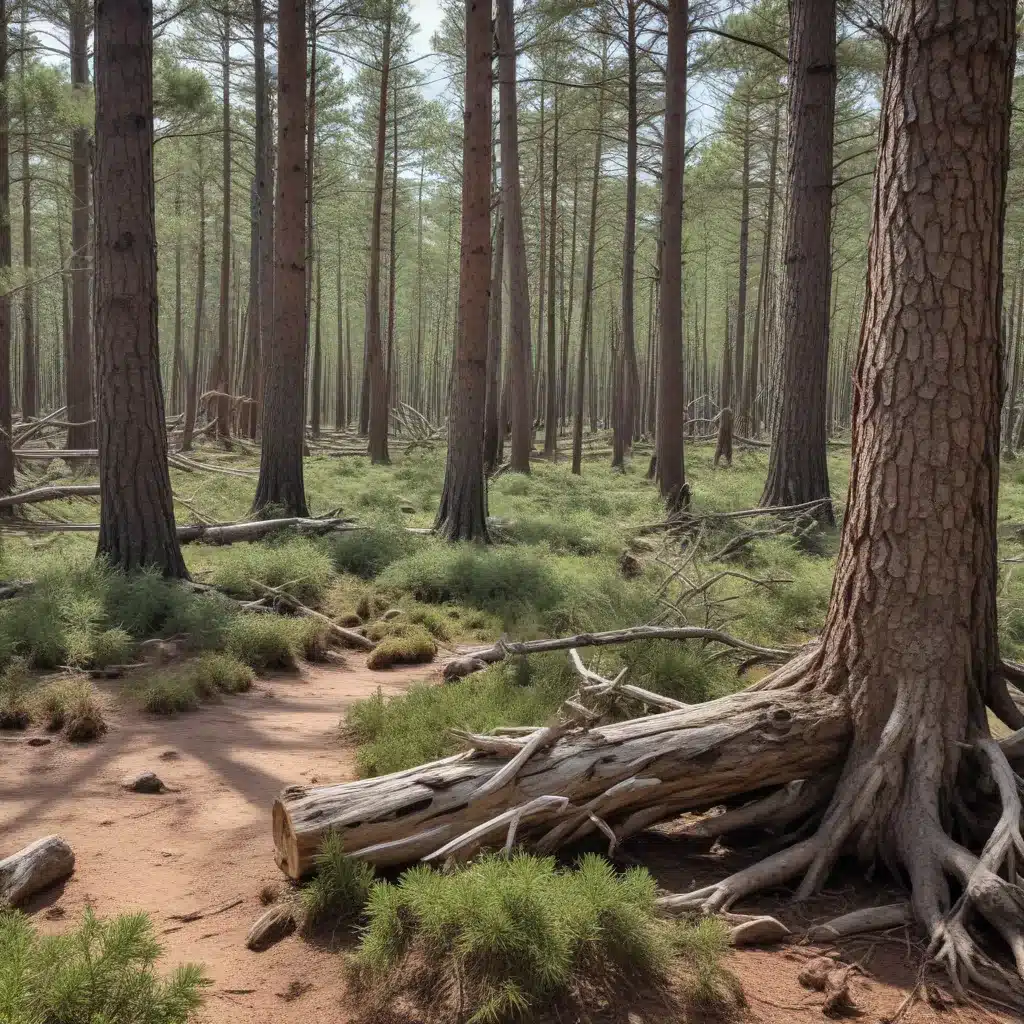
At Crooked Pines Farm, we’re dedicated to cultivating not just bountiful harvests, but also a deep appreciation for the intricate web of life surrounding us. Beyond the lush gardens and verdant pastures, our diverse landscape is teeming with fascinating ecological environments, each supporting its own unique communities of plants and animals.
Diverse Ecological Environments
Crooked Pines Landscape
Our farm is situated on a gently rolling terrain, with a mix of open meadows, dense woodlands, and wetland areas. This varied topography creates a mosaic of different microhabitats, each with its own distinct microclimate and collection of flora and fauna.
The open meadows, for example, are home to a vibrant array of wildflowers, from the cheerful black-eyed Susans to the delicate Queen Anne’s lace. These blooms attract a bustling community of pollinators, including busy bees, graceful butterflies, and numerous species of beneficial insects. In contrast, the shaded forest areas are dominated by towering oak, maple, and hickory trees, their canopies filtering the sunlight and creating a more humid and sheltered environment for the woodland understory plants.
Flora and Fauna Interactions
As you explore our trails, you’ll witness the intricate dance between the various plant and animal species. The berry bushes along the forest edge provide a valuable food source for local wildlife, from the nimble-footed white-tailed deer to the chattering Eastern chipmunks. Meanwhile, the fallen logs and decaying leaf litter support a hidden world of decomposers, such as earthworms, fungi, and bacteria, which play a crucial role in nutrient cycling.
Microclimate Variations
Even within a single habitat, you might notice subtle differences in the temperature, moisture levels, and light availability. These microclimate variations can significantly impact the types of organisms that thrive in a particular area. For instance, the shaded, moist understory of the woods may be home to delicate ferns and mosses, while the sunny, drier edges support hardy wildflowers and grasses.
Intricate Food Web Dynamics
Predator-Prey Relationships
The farm’s ecosystems are abuzz with a complex web of predator-prey relationships. Raptors, such as the majestic red-tailed hawk, soar overhead, keeping a keen eye out for small rodents and songbirds to add to their diet. Meanwhile, the rabbit and vole populations play a vital role as prey, providing sustenance for a variety of predators, from the coyote to the red fox.
Decomposer Communities
Beneath the surface, another crucial component of the food web is the decomposer community. Fungi, bacteria, and invertebrates like earthworms and beetles break down organic matter, recycling nutrients back into the soil to support the growth of new plants. Their tireless work helps to maintain the fertility and biodiversity of our farm’s ecosystems.
Nutrient Cycling
This continuous cycling of nutrients, from the decomposition of organic matter to the uptake by plants and their subsequent consumption by herbivores and predators, is the foundation of a healthy, thriving ecosystem. By understanding and respecting these natural processes, we strive to work in harmony with the land, adopting sustainable farming practices that nourish and sustain the delicate balance of life on our farm.
Adaptation and Resilience
Plant Life Strategies
The diverse plant species found at Crooked Pines have developed a wide range of adaptive strategies to thrive in their respective environments. Some, like the deep-rooted prairie grasses, are well-equipped to withstand drought conditions, while others, such as the shade-tolerant ferns, have adapted to the low-light conditions of the forest understory.
Animal Behavioral Adaptations
Similarly, the animals that call our farm home have evolved unique behavioral adaptations to help them survive and flourish. The migratory birds that visit our wetlands, for example, time their arrivals and departures to the seasonal changes, taking advantage of the abundant food sources during the warmer months. Burrowing mammals, like the groundhog and Eastern cottontail, have adapted to seek shelter and escape the elements underground.
Ecosystem Resilience
These remarkable adaptations, coupled with the inherent biodiversity of our farm, contribute to the overall resilience of our ecosystems. When faced with disturbances, whether natural or human-induced, the diverse web of life at Crooked Pines is better equipped to withstand and recover, ensuring the long-term health and vitality of our land.
Conservation Efforts
Habitat Management
At Crooked Pines, we are committed to practicing sustainable land management techniques that support the diverse ecosystems found on our farm. This includes carefully managing our forest stands, maintaining native plant communities, and creating wildlife-friendly habitats, such as pollinator gardens and wetland areas.
Biodiversity Preservation
By preserving the rich biodiversity of our farm, we not only ensure the long-term viability of our ecosystems, but also provide valuable educational opportunities for visitors, especially children. Through guided nature walks, hands-on exploration activities, and interactive exhibits, we aim to foster a deeper appreciation for the intricate web of life that surrounds us.
Sustainable Practices
In addition to our habitat management efforts, we also employ a range of sustainable farming practices, such as cover cropping, no-till cultivation, and integrated pest management. These methods help to maintain soil health, reduce our environmental impact, and create a more resilient, self-sustaining farm ecosystem.
As you explore the diverse landscapes of Crooked Pines, we invite you to slow down, observe, and immerse yourself in the captivating natural world that thrives all around us. By understanding and appreciating the intricate ecosystems that make our farm so special, we can all become better stewards of the land, ensuring that these precious habitats continue to flourish for generations to come.
For more information on our educational programs, upcoming events, and ways to get involved, please visit www.crookedpinesfarm.com.


